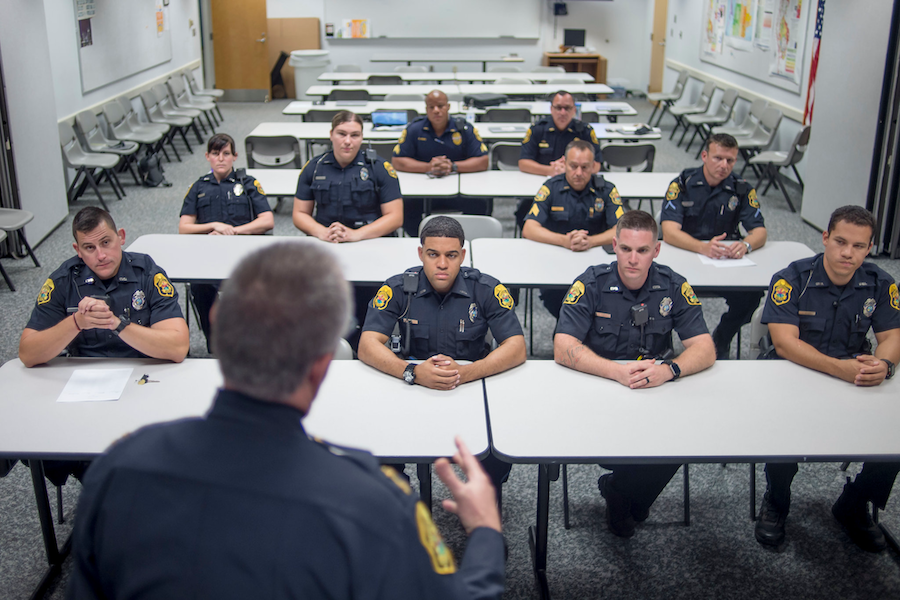
Street Cop Training

Four Rules to Guide Your Teaching and Lesson Building
Instructing most anything in this field is serious business. We have a lot of high stakes/high consequence tasks we’re expected to accomplish, be it driving, search, or seizure, you get the picture. Because of the gravity of what we do, I have four rules to guide my teaching and lesson building.
1. Everything I say can get the student killed. This doesn’t just mean literal death. If I provide poor instruction, it could lead to someone getting torn apart on the stand, finding themselves on the wrong side of policy, or losing in the court of public opinion. I need to ensure that what I’m providing to the student can pass a sniff test. And if it is an actual life and death task, I better have put in all of the leg work I could to ensure I’m providing the student with the best practices and methods.
2. I don’t get to tell the student how they learn. I’ve dealt with far too many classes where the instructor puts it on the student to understand what is being presented. If a student asks questions because they don’t understand, the instructor will repeat what they said exactly how they just said it. And if the student doesn’t get it, they just shrug and move on. It’s like trying to slow down and speak louder when someone doesn’t understand English. That’s not going to make it better. If a student doesn’t grasp what we’re showing them, we need to adjust what we’re presenting, either by changing how we’re explaining the material or how the material is experienced. To help us do that, we need to make sure we continue learning from multiple sources on the same topic. An easy example would be getting a good sight picture with iron sights on the pistol. Not every person will understand how to use their sights from a PowerPoint slide or two. And not every instructor will demonstrate and explain that task in the same manner. Learning from other instructors to improve our presentation is one of our duties as instructors.
3. I need to teach to the student, not the curriculum. It can be easy to fall back on our class outline and just teach the class robotically. And sometimes, that’s all the more energy you’ll get from a student body. But we should be playing our course off of the students in it. If a student body already demonstrates a firm grasp on one topic, abbreviate that portion and use the time to expound upon a more difficult section, or capture that time to add material to the end of class that didn’t make the cut initially. That spare time is the opportunity to give more to the students and improve their class experience.
4. Don’t give the student an excuse not to live up to my expectations. One of the biggest disservices we can do to our students is giving them an out if they don’t meet the performance standard for a class. Our brain is our most significant barrier to self-improvement. If it can latch onto an excuse such as “well, the instructor does this every day,” our performance will reflect that attitude. So first, as instructors, we need to ensure we’re giving good instruction, and then we need to measure and maintain the standard we’re expecting. So we measure what matters and don’t give the student an excuse.
These rules aren’t set in stone. I’m always looking to add to them or improve upon them. I also want to be clear that I didn’t come up with these myself. Unfortunately, I don’t remember who, but I’ve taken them from other instructors and added them into my lexicon. The point is we need to remember to be students as well. That’s the best way for our instruction to improve. We owe it to our students.